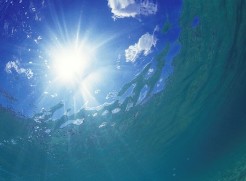Safe Drinking Water Act
Protecting Tap Water in the U.S.
by Merlin Hearn
Note: As an Amazon Associate I earn from qualifying purchases.
The Safe Drinking Water Act (SDWA) was initiated in 1974. Due to the growing concern that the safety of our drinking water was being ignored, the federal government set the law in place, ensuring all drinking water be treated for contaminants and monitoring the pollution of drinking water.
The SDWA is regulated by the Environmental Protection Agency (EPA) and currently monitors over 160,000 public water systems.
Since 1974, there have been three main changes to the law—in 1986, 1996, and 2005.
These amendments were enacted to improve the function of the law.
The main points in which these amendments affected the law were by:
- Improving the monitoring for new pollutants
- Improving restrictions on lead in water plumbing
- Improving filtration for certain water systems
- Improving the infrastructure of the water systems
- Improving the public awareness and information available
- Improving the small water systems, giving them the consideration and resources to run an efficient water system.
Problems in Congress
Currently, there is a new amendment being pushed in Congress to make drilling companies report the chemicals used in their hydraulic fracturing process.
It would require the companies to report the chemicals they mix with sand and water and pump underground in the process known as “fracking.”
These chemicals are treated as company secrets, but until the EPA knows what chemicals are being pumped into the ground, they are not able to properly treat and filter the water.
The drilling companies have stopped this law from being passed two times, in 2010 and 2011.
The Function of the SDWA
Currently, the EPA monitors over 160,000 public water systems, with private wells serving less than 25 people excluded.
Before 1996, the law functioned primarily as treatment for tap water and human consumption, but with the amendments, it was expanded to protect the water for the entire process from underground aquifers to our tap.
There are a number of threats to drinking water, contaminants, waste pumped into the ground, human waste, improperly disposed chemicals, and naturally occurring substances.
The SDWA also requires the EPA to post unregulated contaminants which may require treatment, but are currently not being treated.
Concerns about the SDWA
With such a large government program, there are going to be problems contained in a specific community or on a wider scale.
In farming communities, there are concerns of pesticides and herbicides contaminating the water. The problem is that these usually only enter the water four or five times a year, and are not considered a major concern.
Other people have also questioned the way in which the water is treated, with some of the chemicals used to purify the water as having harmful side effects.
But, the main concern right now is with the “fracking” processes occurring in mining communities.
Conclusion
Passing the Safe Drinking Water Act was a major step in improving drinking water quality, with a standard set for the treatment of water, but there are still contaminants and problems at the local level and beyond.
Talk to your local government or check out the EPA site regarding the SDWA to learn more and see what you can do.
Resource
Lawshelf.com; Environmental Law: The Clean Water Act.
Return from Safe Drinking Water Act to Types of Water Pollution
If you would like to reproduce or republish this article or any other article on this site, feel free to do so but please include a reference or link to the article at WaterBenefitsHealth.com.
Sign Up for Our Monthly
Newsletter
Visitor Comments
"This was the best and most straight forward info on the net yet. I asked a question and got an answer that made sense. Thank you so much!" - Linderlinder
FINALLY!!! I have been wondering about this for years with no 'solid' answer. This is exactly what I've been wanting to know! Thank you for this share..." by Andy
"Thank you for the information, Nancy. I appreciate it. Your article and findings are very helpful, referring to dehydration." - Carolyn
"Lemon water is one drink both my wife and I can't drink. It upsets our stomachs. We are in our sixties and in very good health—well, better health now that we drink about 2 liters plus of water each day. It has made so much difference to our digestive systems and recovery every day. Thank you for your website and effort." - Rod



